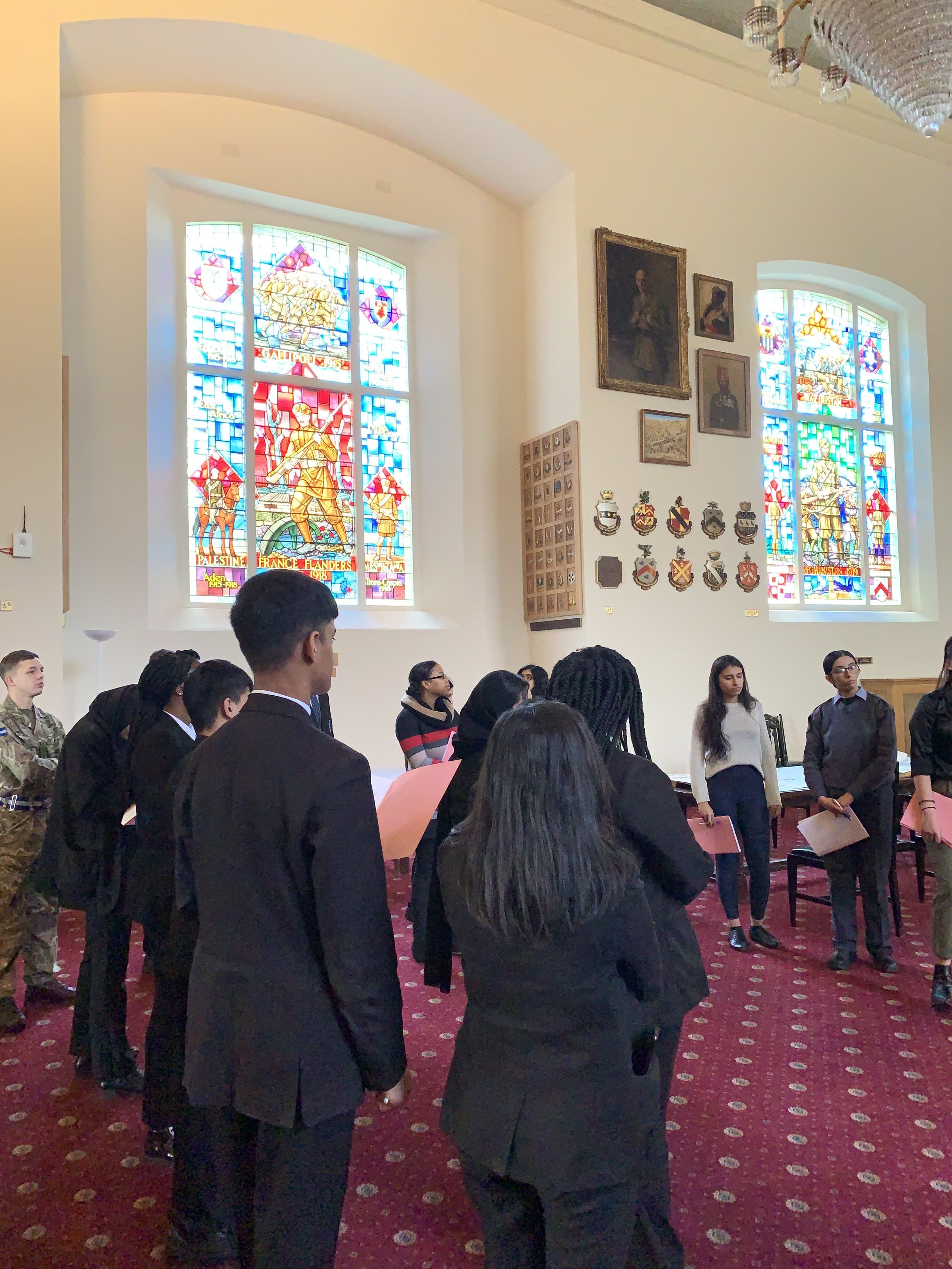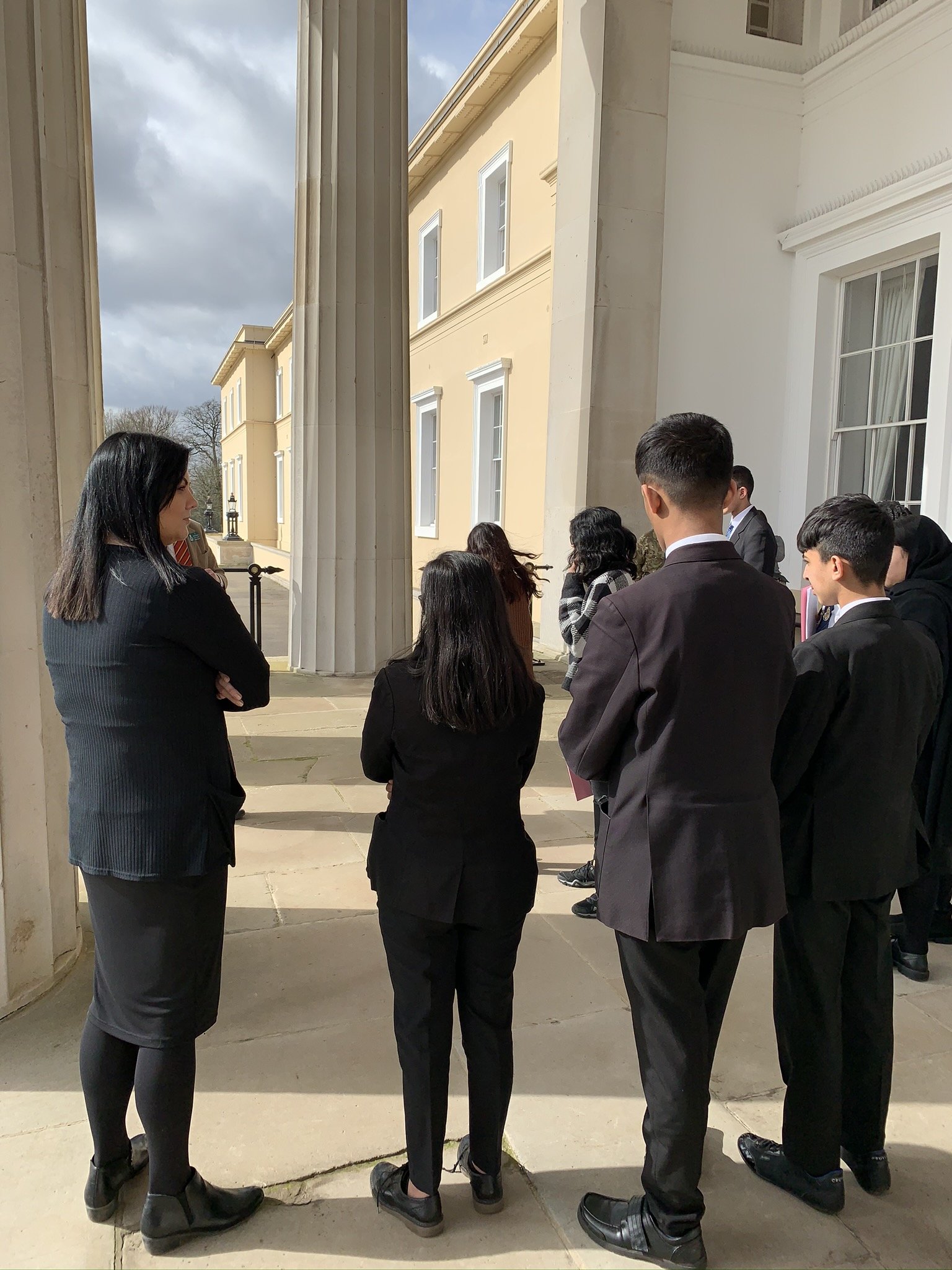Commonwealth Day at Sandhurst
The month of March is well known for celebrating International Women’s Month, but for me it is raising awareness of Commonwealth Day. For those not aware of Commonwealth Day, it is an annual celebration and celebrated on the second Monday of March. It was first celebrated on 24th May 1902 and then in 1958 Prime Minister, Harold MacMillan, announced in Parliament that Empire Day would be renamed Commonwealth Day. It is an annual celebration of the Commonwealth nations. Each year in the UK there is an annual event held at Westminster Abbey and attended by Queen Elizabeth II, who opens the event as the Head of State.
For many this day is unknown and overlooked, so when I got a call from my friend Ann Millier-McCaffers to have access all areas to Royal Military Academy Sandhurst, of course I jumped at the chance. This was a perfect opportunity to highlight Commonwealth Day and for me to share my knowledge with others. A few weeks later myself and our young people turned up and got the VIP access, we also had a chance to speak about my Indian Women and War project. This was the first time RMAS had invited a community group to have access all areas with industry experts. This was an accomplishment in its own right!
Arriving at RMAS we were treated like VIPs, an entire day of learning of the contribution made by Indian soldiers. We started the tour at the iconic Indian Army Memorial Room, which preserves the history of the British Indian Army. After 1947 (when the Indian Independence Act was passed) the British Indian Army was disbanded. Field Marshal Sir Claude Auchinleck, the last Commander-in Chief in India, wanted to preserve the history and heritage of those who volunteered and contributed their services from India. It was in 1950 that the room was officially dedicated to Indian Army Memorial Room to showcase the collections donated specially focused on British Indian Army.
We learnt the history of this room and the contents within as well as the Indian contribution to World War One and Two. There were paintings of Subadar Mir Dast, VC, I.O.M, Risaldar-Major Narain Singh IDSM OBI, and of Jamadar Gaje Ghale VC along with others. There were also medals awarded from wars/battles from before First World War. Many young people often and mistakenly think that the First World War was the first time that Indian Soldiers volunteered in wars and won awards. The learning session explored the stories of these men and along with many objects there were regimental badges that they had never seen before. The Indian Army Memorial Room is also home to the iconic stained-glass windows which commemorate the Indian Army contribution to wars.
Amongst the collection were photographs, archives and registers which experts from Sandhurst Collections had brought out for our special day. Amongst the history we were learning we found that two former Presidents of Pakistan (who are discussed in further detail as this blog continues) had trained at Royal Military College Sandhurst and were part of the cricket team. This really excited our cricket fans as we were able to access the cricket records, photographs and registers that once would have been locked away. For many of the young people who come from South Asian backgrounds they never knew this history and this new narrative brought out conversations of how cadets spent their time whilst at Sandhurst.
After lunch we were given a private tour of the Old College and the Royal Memorial Chapel. The Chapel was interesting because the British Army still use it for services in the present day and at the back of the Chapel there were names of Indian Soldiers who had fought in the wars.
The day ended with everyone learning something new about Indian soldiers as well as a big discussion on cricket. Ann arranged this surprise as she helped promote the work I do and to engage more conversation around Commonwealth Day. An unforgettable day and the main question the young people had was who was the best team at cricket, India, or Pakistan?
Iskander Mirza
Iskander Mirza studied at the University of Mumbai (Bombay), before he came to Royal Military College Sandhurst. Whilst at Sandhurst, Mirza was selected by the British Governor-General for the King’s Commission. In July 1921 he was promoted to Lieutenant and then promoted again in 1927 to Captain before leaving the army as Lieutenant-Colonel. While Mirza was at Sandhurst as a cadet, he joined the cricket team and played well. When Partition was declared Mirza was made Joint Defence Secretary for the Pakistani Army and he undertook this role until 1954. In 1954 until 1955, Mirza undertook the role of Governorship of East Bengal and Cabinet Minister, in 1955 until 1956 Mirza was Governor General of Pakistan. It was in 1956 until 1958 that Mirza was announced President of Pakistan and he remained as President of Pakistan until Mohammad Ayub Khan took over the role. As he was no longer the President, he was forced out of Pakistan and in 1959 he left Pakistan to live in London. Mirza lived in London until his death in 1969 after suffering from a heart attack.
Mohammad Ayub Khan
Mohammad Ayub Khan studied at Aligarh Muslim University (AMU) when he was accepted as a trainee at Royal Military College Sandhurst. Khan was fluent in Urdu and English and played many cricket matches as he was part of the team. During the Second World War Khan was posted out to the Burma Campaign and on 2nd February 1945 he was promoted to the rank of Major.
When Partition of India and Pakistan was declared, Khan opted to join the Pakistani Army. At this time, he was one of the most senior serving officers in the British Indian Army. In 1949, Khan was awarded the Hilal-I-Jurat by the Prime Minister, Liaquat Ali Khan, for his service. After the war, Ayub Khan became Commander in Chief and later as Defence and Cabinet Minister. After being unimpressed with the President of Pakistan, Iskander Mirza, Ayub Khan seized the Presidency. Ayub Khan ruled as the President from 1958 until 1969. Ayub Khan kept a journal that was later published, and in 1974 Ayub Khan passed away at his home in Islamabad.




